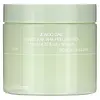What's inside
What's inside
 Key Ingredients
Key Ingredients

 Benefits
Benefits

 Concerns
Concerns

 Ingredients Side-by-side
Ingredients Side-by-side

Water
Skin ConditioningDipropylene Glycol
HumectantGlycerin
HumectantButylene Glycol
Humectant1,2-Hexanediol
Skin ConditioningHouttuynia Cordata Extract
Skin ConditioningBetaine
HumectantChamaecyparis Obtusa Water
MaskingBetaine Salicylate
AntimicrobialMadecassoside
AntioxidantAsiaticoside
AntioxidantMadecassic Acid
Skin ConditioningAsiatic Acid
Skin ConditioningPolyglyceryl-10 Laurate
Skin ConditioningArginine
MaskingPolyglyceryl-10 Myristate
Skin ConditioningMelaleuca Alternifolia Leaf Oil
AntioxidantDisodium EDTA
Sodium Hyaluronate
HumectantEthylhexylglycerin
Skin ConditioningChlorphenesin
AntimicrobialLimonene
PerfumingWater, Dipropylene Glycol, Glycerin, Butylene Glycol, 1,2-Hexanediol, Houttuynia Cordata Extract, Betaine, Chamaecyparis Obtusa Water, Betaine Salicylate, Madecassoside, Asiaticoside, Madecassic Acid, Asiatic Acid, Polyglyceryl-10 Laurate, Arginine, Polyglyceryl-10 Myristate, Melaleuca Alternifolia Leaf Oil, Disodium EDTA, Sodium Hyaluronate, Ethylhexylglycerin, Chlorphenesin, Limonene
Water
Skin ConditioningMethylpropanediol
SolventGlycerin
HumectantGlycereth-26
HumectantPropanediol
SolventPolyglycerin-3
HumectantDipropylene Glycol
Humectant1,2-Hexanediol
Skin ConditioningSorbeth-30 Tetraoleate
EmulsifyingOctyldodecanol
EmollientBifida Polysaccharide
HumectantButylene Glycol
HumectantC12-14 Pareth-12
EmulsifyingAcrylates/C10-30 Alkyl Acrylate Crosspolymer
Emulsion StabilisingTromethamine
BufferingEthylhexyl Palmitate
EmollientAllantoin
Skin ConditioningGlyceryl Ethylhexanoate
EmollientAdenosine
Skin ConditioningCetyl Ethylhexanoate
EmollientSodium Hyaluronate
HumectantDisodium EDTA
Polyglyceryl-10 Oleate
Skin ConditioningGardenia Taitensis Callus Extract
AntioxidantHydrogenated Lecithin
EmulsifyingXylitylglucoside
HumectantLactuca Indica Extract
Skin ConditioningAnhydroxylitol
HumectantAgave Americana Leaf Extract
Skin ConditioningXylitol
HumectantSaussurea Involucrata Extract
HumectantCaprylic/Capric Triglyceride
MaskingNelumbo Nucifera Flower Extract
Skin ConditioningGlucose
HumectantPhosphatidylcholine
EmulsifyingCirsium Flower/Leaf/Stem Extract
Skin ConditioningPanthenol
Skin ConditioningBeta-Glucan
Skin ConditioningCeramide NP
Skin ConditioningCarum Carvi Seed Oil
MaskingGlycine
BufferingPhytosphingosine
Skin ConditioningSerine
MaskingGlutamic Acid
HumectantAlanine
MaskingLysine
Skin ConditioningProline
Skin ConditioningThreonine
Arginine
MaskingHyaluronic Acid
HumectantWater, Methylpropanediol, Glycerin, Glycereth-26, Propanediol, Polyglycerin-3, Dipropylene Glycol, 1,2-Hexanediol, Sorbeth-30 Tetraoleate, Octyldodecanol, Bifida Polysaccharide, Butylene Glycol, C12-14 Pareth-12, Acrylates/C10-30 Alkyl Acrylate Crosspolymer, Tromethamine, Ethylhexyl Palmitate, Allantoin, Glyceryl Ethylhexanoate, Adenosine, Cetyl Ethylhexanoate, Sodium Hyaluronate, Disodium EDTA, Polyglyceryl-10 Oleate, Gardenia Taitensis Callus Extract, Hydrogenated Lecithin, Xylitylglucoside, Lactuca Indica Extract, Anhydroxylitol, Agave Americana Leaf Extract, Xylitol, Saussurea Involucrata Extract, Caprylic/Capric Triglyceride, Nelumbo Nucifera Flower Extract, Glucose, Phosphatidylcholine, Cirsium Flower/Leaf/Stem Extract, Panthenol, Beta-Glucan, Ceramide NP, Carum Carvi Seed Oil, Glycine, Phytosphingosine, Serine, Glutamic Acid, Alanine, Lysine, Proline, Threonine, Arginine, Hyaluronic Acid
 Reviews
Reviews

Ingredients Explained
These ingredients are found in both products.
Ingredients higher up in an ingredient list are typically present in a larger amount.
1,2-Hexanediol is a synthetic liquid and another multi-functional powerhouse.
It is a:
- Humectant, drawing moisture into the skin
- Emollient, helping to soften skin
- Solvent, dispersing and stabilizing formulas
- Preservative booster, enhancing the antimicrobial activity of other preservatives
Arginine is an amino acid that is important for human development. Your body uses is it to produce hair keratin and skin collagen.
As a cosmetic ingredient, Arginine has antioxidant properties and can also help repair damaged skin. This ingredient is derived either synthetically or from animals.
Arginine isn't fungal acne safe when used in the presence of other lipids (fats, fatty acids, oils, esters, etc). Oils and fats occur naturally within the skin, so take caution when using Arginine if you're prone to fungal acne.
Learn more about ArginineButylene Glycol (or BG) is used within cosmetic products for a few different reasons:
Overall, Butylene Glycol is a safe and well-rounded ingredient that works well with other ingredients.
Though this ingredient works well with most skin types, some people with sensitive skin may experience a reaction such as allergic rashes, closed comedones, or itchiness.
Learn more about Butylene GlycolDipropylene Glycol is a synthetically created humectant, stabilizer, and solvent.
This ingredient helps:
Dipropylene glycol is technically an alcohol, but it belongs to the glycol family (often considered part of the ‘good’ alcohols). This means it is hydrating and gentle on skin unlike drying solvent alcohols like denatured alcohol.
As a masking agent, Dipropylene Glycol can be used to cover the smell of other ingredients. However, it does not have a scent.
Studies show Dipropylene Glycol is considered safe to use in skincare.
Learn more about Dipropylene GlycolDisodium EDTA plays a role in making products more stable by aiding other preservatives.
It is a chelating agent, meaning it neutralizes metal ions that may be found in a product.
Disodium EDTA is a salt of edetic acid and is found to be safe in cosmetic ingredients.
Learn more about Disodium EDTAGlycerin is already naturally found in your skin. It helps moisturize and protect your skin.
A study from 2016 found glycerin to be more effective as a humectant than AHAs and hyaluronic acid.
As a humectant, it helps the skin stay hydrated by pulling moisture to your skin. The low molecular weight of glycerin allows it to pull moisture into the deeper layers of your skin.
Hydrated skin improves your skin barrier; Your skin barrier helps protect against irritants and bacteria.
Glycerin has also been found to have antimicrobial and antiviral properties. Due to these properties, glycerin is often used in wound and burn treatments.
In cosmetics, glycerin is usually derived from plants such as soybean or palm. However, it can also be sourced from animals, such as tallow or animal fat.
This ingredient is organic, colorless, odorless, and non-toxic.
Glycerin is the name for this ingredient in American English. British English uses Glycerol/Glycerine.
Learn more about GlycerinSodium Hyaluronate is hyaluronic acid's salt form. It is commonly derived from the sodium salt of hyaluronic acid.
Like hyaluronic acid, it is great at holding water and acts as a humectant. This makes it a great skin hydrating ingredient.
Sodium Hyaluronate is naturally occurring in our bodies and is mostly found in eye fluid and joints.
These are some other common types of Hyaluronic Acid:
Learn more about Sodium HyaluronateWater. It's the most common cosmetic ingredient of all. You'll usually see it at the top of ingredient lists, meaning that it makes up the largest part of the product.
So why is it so popular? Water most often acts as a solvent - this means that it helps dissolve other ingredients into the formulation.
You'll also recognize water as that liquid we all need to stay alive. If you see this, drink a glass of water. Stay hydrated!
Learn more about Water